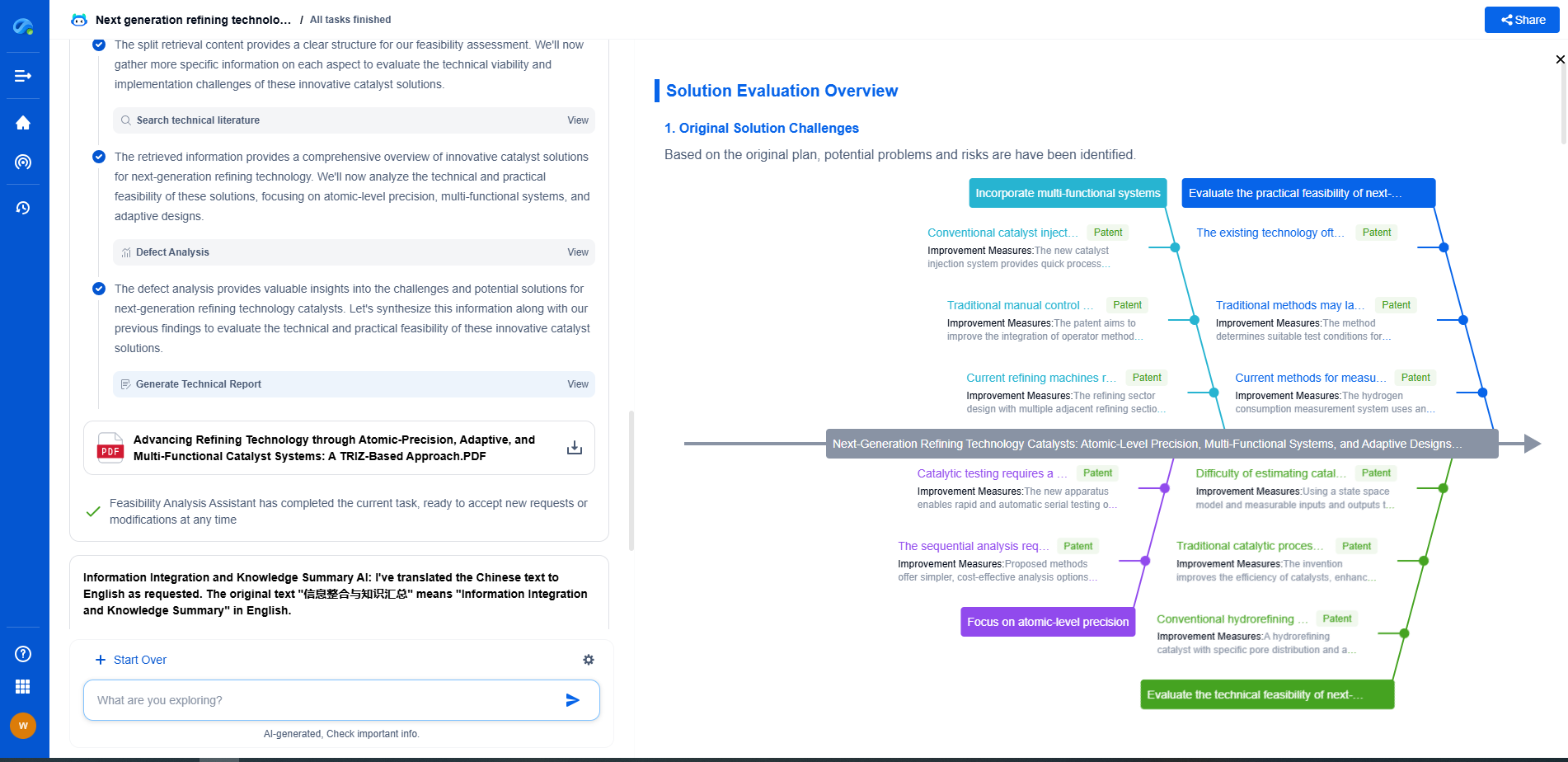What Is Grid Anomaly Detection Using Machine Learning?
JUN 26, 2025 |
In the age of rapidly evolving technology and increasing dependence on electricity, maintaining the reliability and stability of power grids is more critical than ever. Power grids are intricate networks that distribute electricity from producers to consumers, and any disruption can lead to significant economic and societal consequences. This is where grid anomaly detection using machine learning comes into play. It involves identifying unusual patterns or abnormalities in the grid's operations to prevent potential failures or inefficiencies.
The Role of Machine Learning in Grid Anomaly Detection
Machine learning, a subset of artificial intelligence, has shown immense potential in various fields, including the energy sector. Its ability to analyze vast amounts of data and identify patterns that may not be apparent to human analysts makes it an ideal tool for anomaly detection in power grids. By training models on historical and real-time data, machine learning algorithms can effectively monitor the health of the grid, predicting and identifying anomalies before they lead to more significant issues.
Types of Anomalies in Power Grids
Anomalies in power grids can take several forms, and understanding these is crucial for developing effective detection systems. Some common types include:
1. Voltage Fluctuations: Sudden changes in voltage levels can indicate potential faults or inefficiencies in the grid.
2. Frequency Deviations: The power grid operates within specific frequency ranges, and deviations can signal operational problems.
3. Load Imbalances: Unequal distribution of power load can lead to overloads and potential failures.
4. Cybersecurity Threats: With the increasing integration of digital technologies, grids are vulnerable to cyber-attacks, which can cause anomalous behavior.
Machine learning models can be trained to recognize these anomalies by analyzing historical data and identifying deviations from established norms.
Techniques for Grid Anomaly Detection
Several machine learning techniques can be employed for grid anomaly detection, each offering distinct advantages:
1. Supervised Learning: This approach involves training a model on labeled datasets where anomalies are already identified. The model learns to distinguish between normal and anomalous behavior based on this training.
2. Unsupervised Learning: Here, the model is trained on data without predefined labels. It identifies anomalies by detecting deviations from the normal pattern, making it suitable for unknown or emerging anomaly types.
3. Semi-supervised Learning: Combining elements of both supervised and unsupervised learning, this technique uses a small amount of labeled data along with a large amount of unlabeled data to train models. This is particularly useful in scenarios where labeled data is scarce.
Challenges in Implementing Machine Learning for Grid Anomaly Detection
While the benefits are clear, implementing machine learning for grid anomaly detection is not without challenges. One significant hurdle is the availability of quality data. Incomplete or noisy data can lead to inaccurate models. Moreover, power grids are dynamic systems, requiring models that can adapt to changes over time. Continuous updating and retraining of models are necessary to maintain accuracy.
Another challenge is the interpretability of machine learning models. Operators need to understand how decisions are made to trust and act on the model's predictions. This calls for the development of interpretable models that provide insights into the decision-making process.
The Future of Grid Anomaly Detection
As power grids continue to evolve, the need for effective anomaly detection systems will only grow. Advancements in machine learning, particularly in areas like deep learning and reinforcement learning, promise even more sophisticated tools for grid monitoring. Moreover, the integration of Internet of Things (IoT) devices in grid infrastructure can provide real-time data, enhancing the accuracy and reliability of anomaly detection systems.
In conclusion, grid anomaly detection using machine learning is a crucial development in ensuring the stability and efficiency of power grids. By leveraging advanced algorithms and techniques, it is possible to anticipate and mitigate potential disruptions, paving the way for a more reliable and resilient energy future.
Stay Ahead in Power Systems Innovation
From intelligent microgrids and energy storage integration to dynamic load balancing and DC-DC converter optimization, the power supply systems domain is rapidly evolving to meet the demands of electrification, decarbonization, and energy resilience.
In such a high-stakes environment, how can your R&D and patent strategy keep up?
Patsnap Eureka, our intelligent AI assistant built for R&D professionals in high-tech sectors, empowers you with real-time expert-level analysis, technology roadmap exploration, and strategic mapping of core patents—all within a seamless, user-friendly interface.
👉 Experience how Patsnap Eureka can supercharge your workflow in power systems R&D and IP analysis. Request a live demo or start your trial today.
- R&D
- Intellectual Property
- Life Sciences
- Materials
- Tech Scout
- Unparalleled Data Quality
- Higher Quality Content
- 60% Fewer Hallucinations
Browse by: Latest US Patents, China's latest patents, Technical Efficacy Thesaurus, Application Domain, Technology Topic, Popular Technical Reports.
© 2025 PatSnap. All rights reserved.Legal|Privacy policy|Modern Slavery Act Transparency Statement|Sitemap|About US| Contact US: help@patsnap.com

